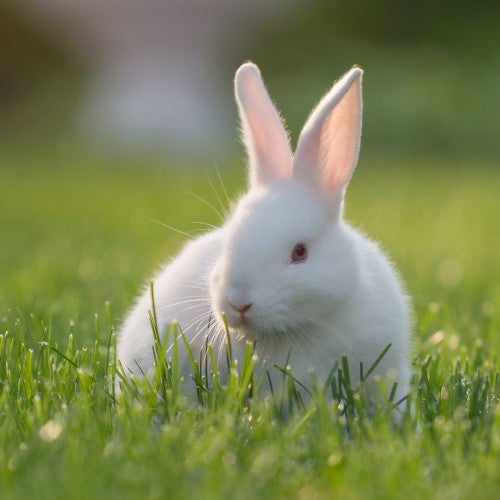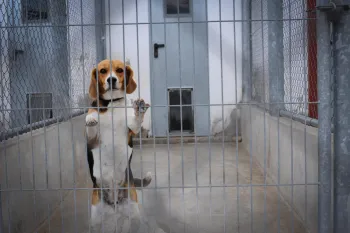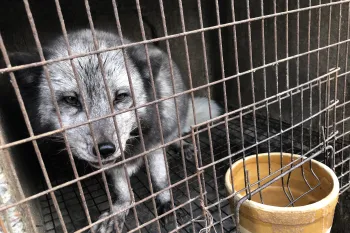Every purchase has power. Many products and the ingredients they are made from, such as makeup and household cleaners, are still tested on animals, and these tests often cause pain and suffering, despite the fact that non-animal alternative tests are typically more accurate. . Even in the fashion industry, millions of animals are often harmed for their fur, spending their lives in cages before being killed for clothing.
However, more companies are offering cruelty-free consumer products and fur-free clothing designs, demonstrating that innovation and compassion can go hand in hand. When you choose ethical brands, industries take notice, because every sale sends a message that animals deserve respect. Together, our choices build momentum for a world where animals are protected and communities thrive on care, rather than harm. Small steps taken by many create a lasting impact.
What does cruelty-free really mean?
Cruelty-free is one of the most searched terms in ethical shopping. At the core, it means that a product and its ingredients are not tested on animals. However, but the term isn't always used consistently, and there is no legal definition for cruelty-free, which can cause confusion.
If you want to make compassionate choices, you may run into misleading claims. So we’ve put together this guide to help you familiarize yourself with these misconceptions:
- Cruelty-free means vegan: Not true. Cruelty-free products avoid animal testing, but can contain animal-derived ingredients, such as beeswax or lanolin.
- Vegan products are cruelty-free: Also false. Vegan products avoid animal ingredients, but some are still tested on animals.
- Cruelty-free applies worldwide: Regulations differ. A product sold in one country may be tested in another where laws require it.
- Cruelty-free is sustainable: No, cruelty-free focuses on no animal harm during product development. Sustainability focuses on lowering environmental impact from concept to disposal.
Understanding the difference between these labels helps you make informed choices. Clear standards encourage brands to adopt transparent practices and prevent companies from using confusing language that hides animal testing.
Cruelty-free certifications
There are special certifications that confirm which brands are cruelty-free. They are awarded by independent organizations that verify a company's adherence to specific practices. Each program has its own standards, but all share a common goal — to ensure that animals are not harmed. Major certification labels include:
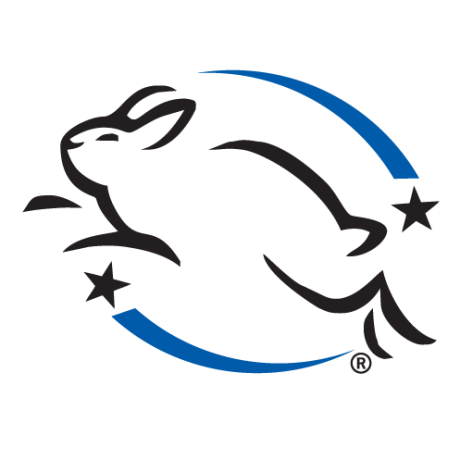
Leaping Bunny
Leaping Bunny: Humane World for Animals is one of the founding member organizations for Leaping Bunny, which certifies cosmetics, personal care products, household products, and pet grooming products. Today, it is one of the most trusted logos worldwide, and confirms no new animal testing for their finished products or its ingredients anywhere in the supply chain.
Certified Humane: Certified Humane confirms that the producer meets specific Animal Care Standards, applying these standards to farm animals at all life stages.
Cruelty Free International: Cruelty Free International is a global organization that campaigns against animal testing, recognizing brands that meet cruelty-free standards. Cruelty free international manages the Leaping Bunny program outside of the U.S. and Canada. While the standards are not 100% the same as what is found in the U.S., it follows many of the same guidelines.
Spotting authentic logos
Authentic cruelty-free logos are clear, consistent and always look the same across products. Fake or misleading versions may use similar designs but often lack certification details on the company's website or the certified official list. When in doubt, checking the certifier's database helps confirm if a brand is fully recognized.
Humane World for Animals/
How to know if a product it really cruelty-free
Look for trusted logos, read ingredient lists carefully and be wary of misleading claims.
How to know if a product is really cruelty-free
Finding truly cruelty-free products can feel overwhelming, but a few simple steps make it easier. You can look for trusted logos, read ingredient lists carefully and be wary of misleading claims. But, some packaging uses language that sounds compassionate, but doesn't guarantee cruelty-free practices. Be cautious of the following phrases:
- “Not tested on animals” — The phrase is unregulated and may not cover ingredients or suppliers.
- “Finished product not tested on animals” — While the final product may be free of animal testing, this wording is misleading, as the ingredients may not be cruelty-free.
- "No animal testing unless required by law" — Another potentially confusing phrase, often meaning testing still happens in countries where it's mandated.
Reading ingredient lists
Ingredients alone won't confirm whether a product was tested on animals, but they can raise awareness about it. Animal-derived ingredients like lanolin, beeswax and carmine appear in many products.
Using trusted resources
Because labels can be confusing, third-party databases are valuable tools. Trusted organizations, such as the Leaping Bunny, maintain updated brand lists — a resource that confirms which companies truly meet the program’s high standards.
Putting it all together
Identifying cruelty-free products means combining label awareness with research. Look for authentic certifications, question vague claims and cross-check brands in trusted databases. Over time, these habits become second nature. Each informed choice strengthens the market for products that prioritize compassion and empathy.
A guide for cruelty-free living
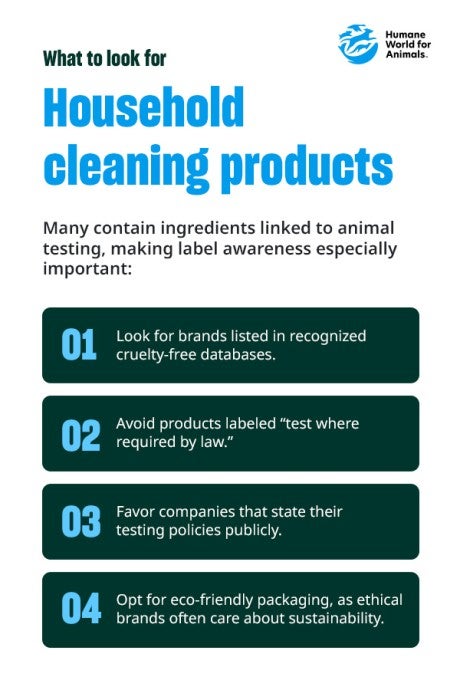
WebFX
Cruelty-free living goes beyond makeup. From the products we use at home to the clothes we wear, every choice can reflect compassion. This cruelty-free guide makes it easier to spot cruelty-free alternatives across sectors. Each choice you make supports innovation and a more humane market across industries.
Household cleaning products
From dish soap to laundry detergent, cleaning suppliers often fly under the radar. Yet many contain ingredients subject to new animal testing, making label awareness especially important:
- Look for brands certified by Leaping Bunny.
- Avoid products labeled “not animal tested unless required by law.”
- Favor companies that state their testing policies publicly.
Beauty and personal care
Cosmetics and skincare are among the most common areas where you may seek cruelty-free options. Knowing what to check can help you avoid misleading claims and support cruelty-free brands that value compassion:
- Look for the Leaping Bunny logo or consult the Leaping Bunny list.
- Research vague terms like “not tested on animals” and “cruelty-free.” Try to get confirmation on whether the company is accurately representing this.
- Choose brands that share their supplier policies.
- Check for animal-derived ingredients if you prefer vegan products.
Food and agriculture
The food we buy has one of the biggest impacts on animal welfare and sustainability. The best approach would be to incorporate plant-based alternatives into your meals. Even going meat-free one day per week helps support healthier, more ethical food systems:
- Research companies' animal welfare policies for farming practices. Many companies will use impressive-sounding animal welfare claims on their websites and/or labels. Unfortunately, the certifications for farm animal welfare compliance vary greatly in terms of sincerity — and some are primarily for “humane-washing.
- Avoid foods tied to factory farming or poor animal conditions.
- Support local or small-scale farms with transparent practices.
Fashion and textiles
Clothing and accessories can quietly drive animal suffering through leather, fur, wool and down. With growing innovation in sustainable fabrics, it's easier than ever to choose style without cruelty:
- Choose one of the 1,600 fur-free brands and opt for leather-free and down-free options.
- Look for clean labels like “vegan leather” or “recycled textiles.”
- Support brands with public animal welfare commitments.
- Be cautious of vague terms like “ethical” without details.
Pet care
Our pets rely on us for safe, healthy products. By buying cruelty-free goods like shampoos, treats and toys, you extend the same compassion you show them to animals everywhere:
- Select pet shampoos and other grooming products that are certified cruelty-free by the Leaping Bunny Program and going to the “Animal Care” section.
- Avoid using products with undisclosed ingredient sourcing.
- Look for plant-based or responsibly sourced pet foods.
- Choose brands that donate to or support animal welfare causes.
Tell the FDA: End cruel and outdated animal testing
Dogs, monkeys, and other animals are still trapped in painful experiments despite humane, effective alternatives. These tests are not only cruel but also ineffective: 90% of drugs that pass animal testing fail in human trials. Urge the FDA to require humane, modern alternatives that truly protect both animals and people.
The impact of choosing cruelty-free
Choosing cruelty-free products makes a real difference for animals, the planet and people. Every time you choose a product not tested on animals, you help reduce suffering in labs where rabbits, mice and guinea pigsare still subject to painful chemical tests. This shift also pressures industries to adopt modern, non-animal testing methods that are safer and more reliable. In fact, 70% of Americans prefer brands that focus on animal welfare.
The benefits extend to the environment as well. Animal confinement and production for leather, fur and other materials are resource-intensive, contributing significantly to greenhouse gas emissions, water waste and deforestation. Real leather production often relies on chromium tanning, which contaminates rivers and poses a risk to both wildlife and local communities. While faux leather helps avoid animal cruelty, many synthetic versions are not biodegradable and can release microplastics, posing new sustainability challenges. Choosing recycled or plant-based alternatives, such as cork or mushroom leather, offers a more eco-friendly path.
Health is another key factor. Animal testing is often unreliable, as results on animals don't always accurately predict human reactions. This can hinder progress toward safer and more effective products. At the same time, some synthetic materials in textiles and household goods may contain chemicals that affect air quality or cause irritation. By supporting brands that are transparent about ingredients and testing, consumers protect themselves while driving the demand for innovation.
More ways to support the cruelty-free movement
Buying from brands that are cruelty-free is a powerful start, but there are many other ways to get involved in creating meaningful change. Beyond the products you buy, your voice and actions can help grow a compassionate culture where animals are protected and companies held accountable. Here are more ways to get involved:
- Contact companies directly: Ask brands about their animal welfare policies, because when enough customers speak up, businesses take notice.
- Support cruelty-free legislation: Support efforts to end animal testing and fur sales in the U.S. and abroad.
- Educate friends and family: Share knowledge about cruelty-free living to help others make informed choices.
- Choose ethical experiences: Avoid entertainment that exploits animals, such as circuses or attractions using captive wildlife.
- Donate or volunteer: Contribute time or money to charities and sanctuaries that protect animals.
- Engage online: Share cruelty-free campaigns on social media with a positive attitude, helping to raise awareness and encouraging others to take action.
- Reward ethical businesses: Leave positive reviews for cruelty-free companies to boost their visibility.
Together, these steps build momentum. Each action strengthens a movement that places compassion and responsibility at its center.
Frequently asked questions
Living cruelty-free is about more than a label — it's about making thoughtful choices and using your influence to create change. With so many products, claims and movements to navigate, it's natural to have questions. Below are some of the most common ones, answered with your journey in mind.
If a product's label feels vague, go beyond its packaging. Visit the brand's website, reach out to customer service and check whether they're listed in a trusted cruelty-free database. Lack of transparency is a red flag. Clear and transparent policies prove a genuine commitment.
Leaping Bunny has a free app with an updated list of personal care and household product companies committed to no new animal testing for their products or ingredients.
Amazon has not received cruelty-free certification of their products, but many Leaping Bunny certified brands are available for purchase on their platform.
While some premium brands market cruelty-free consumer goods at higher prices, there are many affordable options available at retailers and drugstores. As demand grows, competitive pricing makes cruelty-free choices accessible for every budget.
Shopping is only one piece of the puzzle. Advocates can support cruelty-free legislation, join campaigns led by groups like the Humane World for Animals or volunteer at local shelters. Even small acts, like leaving reviews for ethical companies or starting conversations in your community, help the movement grow.
